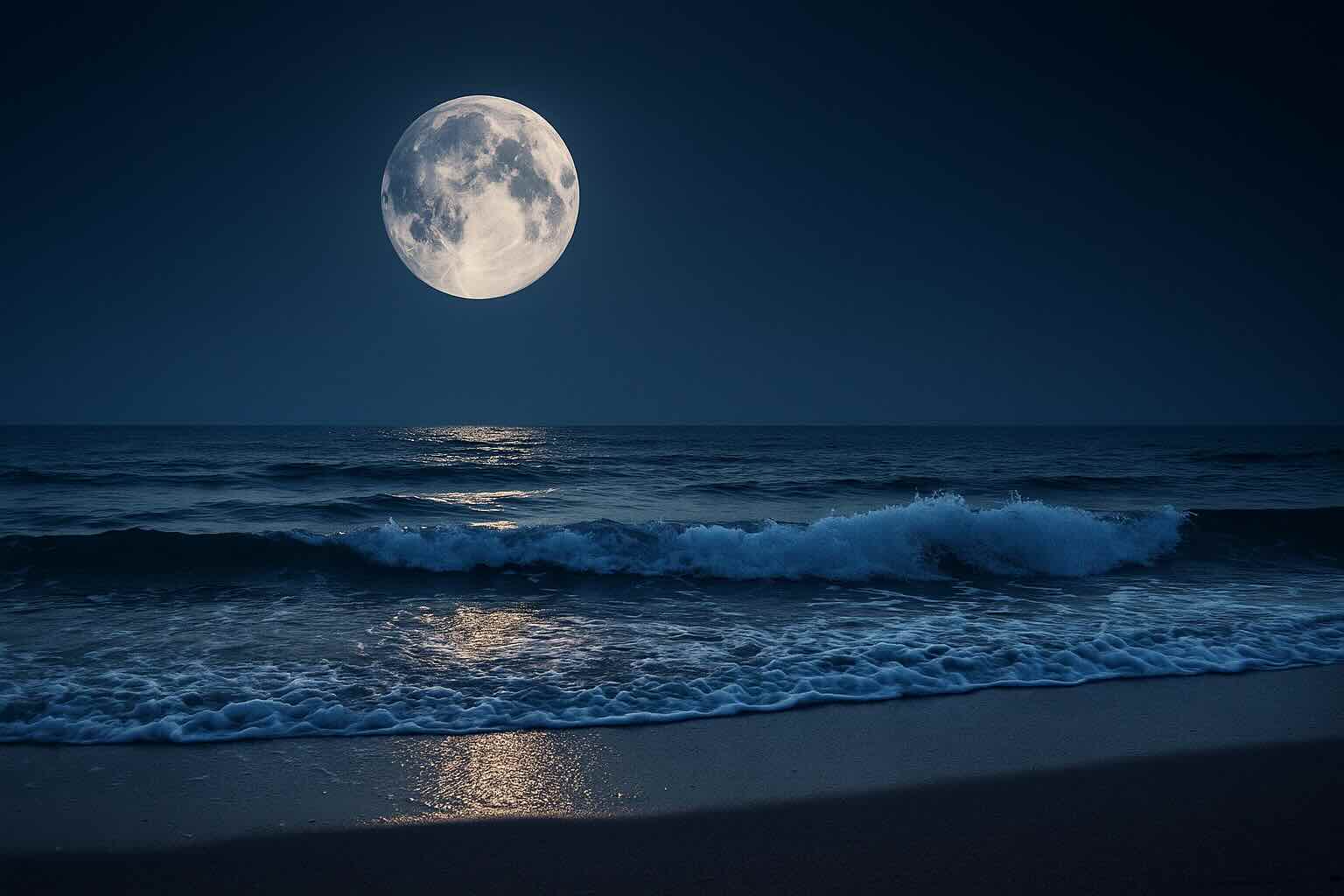The moon has always been a silent partner to life on Earth. It brightens our nights, inspires legends, and guides calendars. But beyond symbolism, the moon plays a direct, measurable role in shaping our oceans and, indirectly, the climate we depend on. Without it, Earth would be a very different place.
The Power Behind Tides
One of the moon’s most visible effects on Earth is the creation of tides. Every day, coastlines around the world rise and fall under its pull. This phenomenon occurs because the moon’s gravity tugs at Earth’s oceans, creating bulges of water that move with its orbit.
When the moon is directly overhead or on the opposite side of the Earth, high tides occur. Between those points, low tides appear. This predictable rhythm has been shaping coastal landscapes for millions of years, carving estuaries, fueling marine ecosystems, and influencing human culture.
Why Tides Matter for Life
Tides are not just water moving back and forth. They are engines of life. Many coastal species depend on tidal cycles for survival. Crabs, clams, and mussels time their feeding and reproduction with the rising and falling water. Migratory birds rely on low tide to expose mudflats rich in food. Fishermen, surfers, and sailors still check tide charts before heading out, proving how much the moon continues to guide human life today.
Even coral reefs breathe with the tides. Strong tidal flows deliver nutrients and oxygen, while also sweeping away waste. In this sense, the moon silently keeps entire ecosystems alive and thriving.
Spring and Neap Tides: The Sun Joins the Dance
While the moon is the main driver of tides, the sun also plays a role. When the sun, moon, and Earth align during full moons and new moons, tides are stronger, called “spring tides.” During quarter moons, when the sun and moon pull from different angles, tides are weaker, known as “neap tides.”
This interplay creates a rhythmic pulse in the oceans, a natural clock that coastal communities and wildlife have learned to live by. Farmers once planned planting and fishing around these cycles, a practice that echoes in some traditions even today.
The Moon’s Role in Earth’s Stability
The moon does more than shape the oceans—it helps stabilize the entire planet. Earth tilts on its axis at about 23.5 degrees, and this tilt gives us seasons. Without the moon’s gravitational anchor, scientists believe Earth’s tilt would shift chaotically over time, leading to extreme climate swings.
By holding Earth steady, the moon ensures that seasons remain relatively stable. This stability may have been crucial for life to evolve and thrive over billions of years. Imagine winters turning into ice ages overnight or summers becoming unbearably hot—without the moon, this could have been our reality.
Can the Moon Influence Climate?
While tides and axial stability are well-documented, scientists are exploring whether the moon also has more subtle effects on climate. Some studies suggest that long-term changes in the moon’s orbit could influence ocean circulation patterns, which in turn shape climate systems.
For example, tidal forces contribute to the mixing of ocean layers. This process helps distribute heat across the globe, preventing certain regions from overheating while others freeze. Without the moon’s constant push and pull, Earth’s oceans might stagnate, altering weather systems and disrupting life as we know it.
A Future Without the Moon?
It’s hard to imagine Earth without its moon, yet scientists know that the moon is slowly drifting away—by about 3.8 centimeters per year. Over millions of years, this will weaken its pull on tides and its stabilizing effect on Earth’s tilt. The changes will be gradual, but they remind us that our planet’s balance depends on forces we often overlook.
For now, though, the moon remains our loyal companion, guiding tides and quietly influencing the delicate balance of Earth’s climate.
The Human Connection to Tides
For centuries, coastal communities have lived in rhythm with the moon. Ancient cultures worshipped it as a goddess of fertility and agriculture, recognizing its influence on crops and water. Fishermen still set their schedules by lunar phases, and surfers eagerly await spring tides for the biggest waves.
Even in modern cities, the moon reminds us that nature is never fully under our control. Rising seas combined with higher spring tides now pose serious threats to coastal towns as climate change accelerates. In this way, the moon has become a quiet witness to humanity’s struggle with rising oceans.
Conclusion: The Moon as Earth’s Silent Guardian
The moon is far more than a bright object in the sky. It shapes tides, sustains ecosystems, stabilizes our planet, and may even influence climate in subtle ways. Without it, Earth would be less stable, less habitable, and perhaps less alive.
As we look to the future—with climate change, rising seas, and new scientific discoveries—the moon reminds us of the powerful forces quietly at work in our daily lives. Its steady pull teaches us that the smallest shifts in nature can ripple into world-shaping effects.
So next time you walk along the shore and watch the tide roll in, remember: you are witnessing the moon’s invisible hand, guiding life on Earth just as it has for billions of years.
